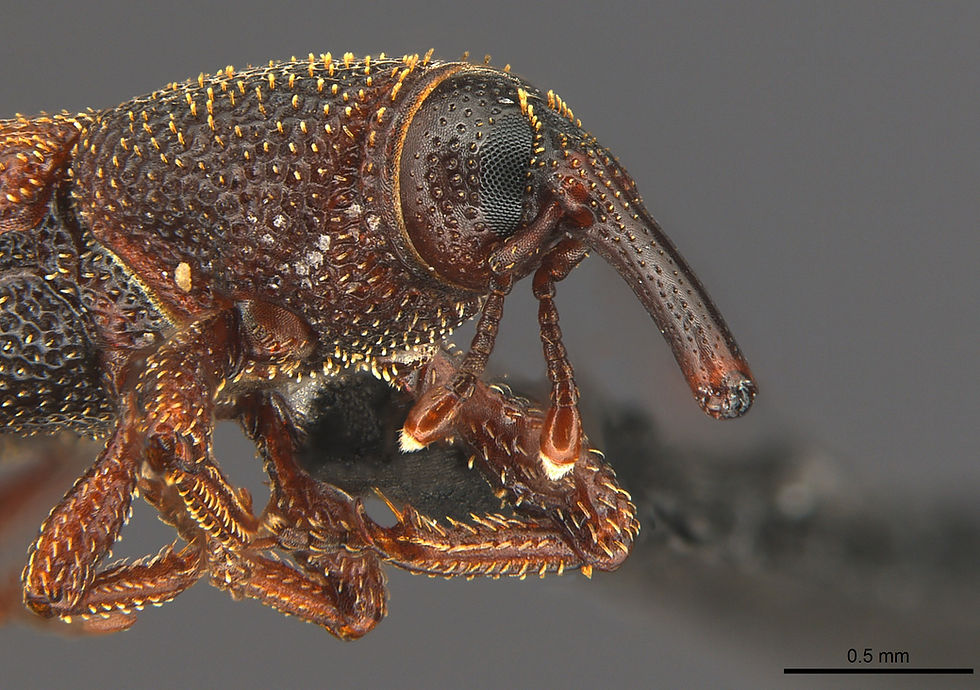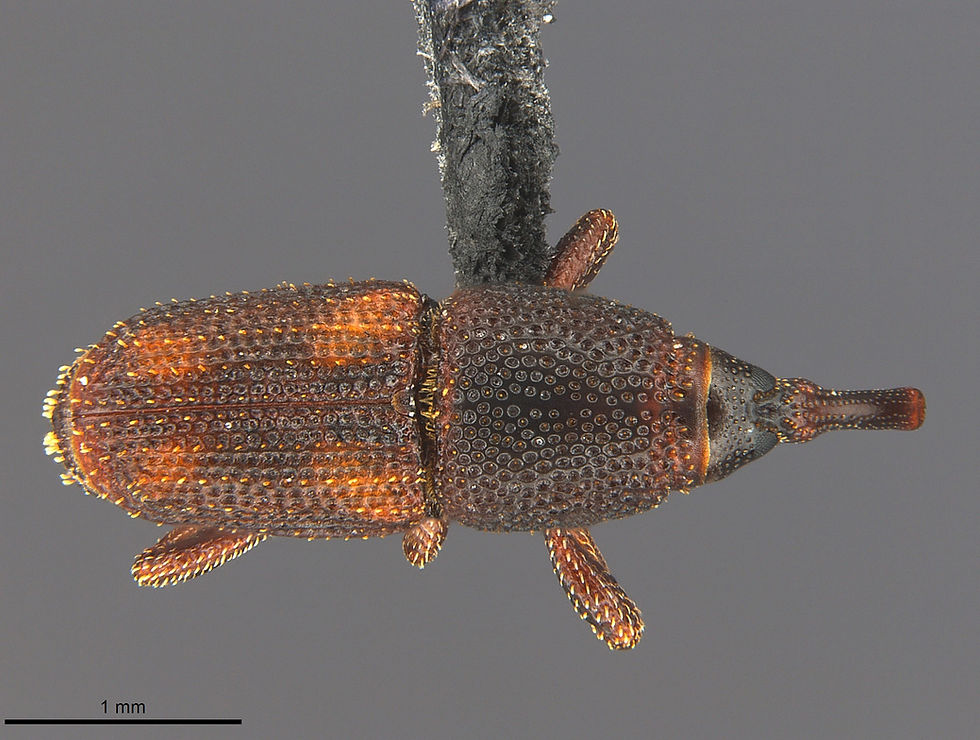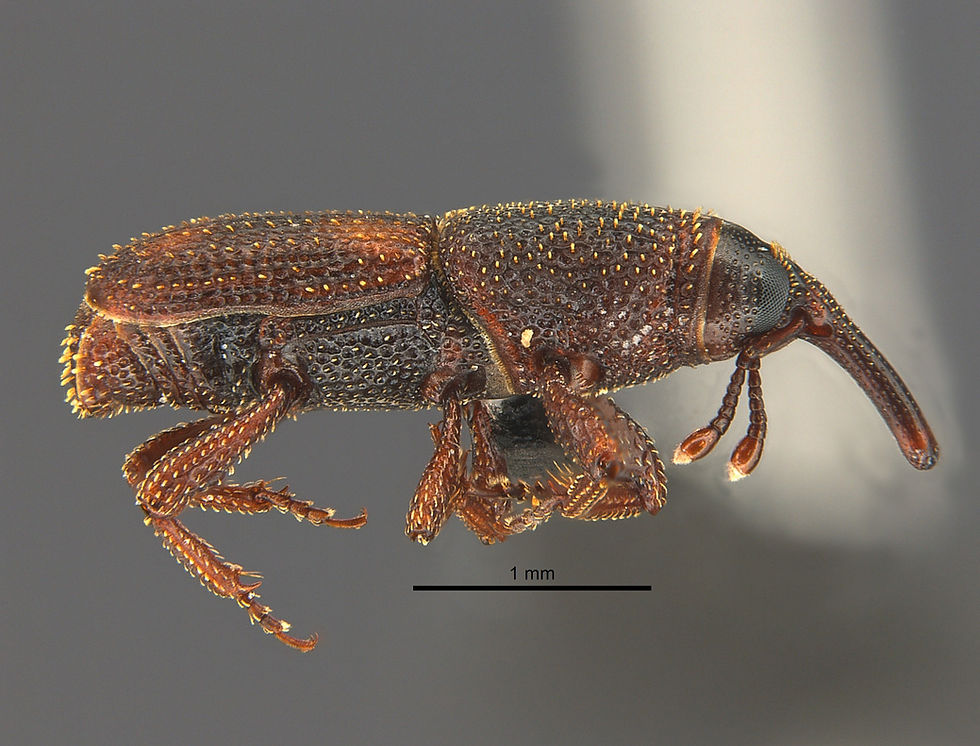Have you seen tiny black insects crawling or flying around in your house during summer? The first thought that comes to mind is a mosquito or maybe some fly but the insect that I want to introduce to you is one that loves rice. Rice is a very popular ingredient in Asian cultures and elsewhere, often included daily in meals. So is it for the rice weevil (𝘚𝘪𝘵𝘰𝘱𝘩𝘪𝘭𝘶𝘴 𝘰𝘳𝘺𝘻𝘢𝘦), as their main diet consists of several kinds of cereal like rice, wheat or maize. One thing amazing is the family it belongs to. Most weevils (but not all) belong to the Curculionidae family that is probably the most diverse family for any creature on earth! Over 80,000 species of Curculionidae have been described. This means that one in 23 known species on the planet is a weevil. This is astonishing and one of the greatest evolutionary success! These beetles (order Coleoptera) are tiny, usually half the size of a grain of rice with a long snout on the head. They are black or brown coloured with four orange/yellowish spots on the back.

When compared to rice-lover people, rice weevils have an even deeper love for rice than you can imagine. Rice does not only represent food but also a place to raise their young! Females usually bore a hole in the kernel and lay up to 4 eggs per grain. And that’s only the beginning as females can lay up to 400 eggs throughout their lifetime. The grain provides nutrients to the larvae until they reach the adult stage. In about a month, adult weevils will emerge from the grain and fly away, looking for mates to start a new rice loving generation.

Rice weevils are originally from the Indo-Malayan region, but because of rice trading activity, they have been unintentionally dispersed all around the world, and maybe even to your kitchen. Stored grain products are their main habitat but they can also be found in outdoor fields of grains. Products infested by rice weevils will lose their economic value in the trading industry. With their high infestation ability, they are considered one of the most economically important pests worldwide.

But besides their love for crops, rice weevils are completely harmless to humans with no records of biting, stinging or transmitting diseases. When being disturbed, they will draw in their legs and lie still for several minutes - pretending to be dead, a behaviour encountered in many animal species and known as thanatosis. Next time if you come across a rice weevil, you may see them pretending to be a grain of rice itself.


Comments